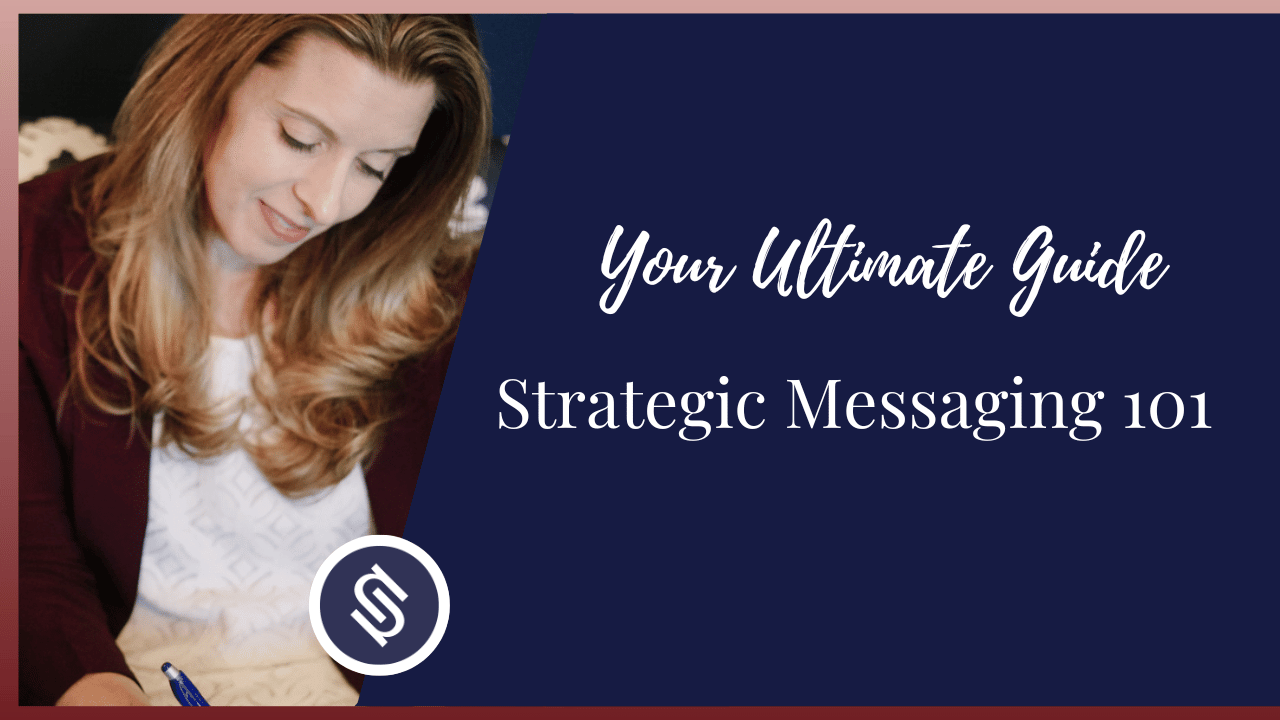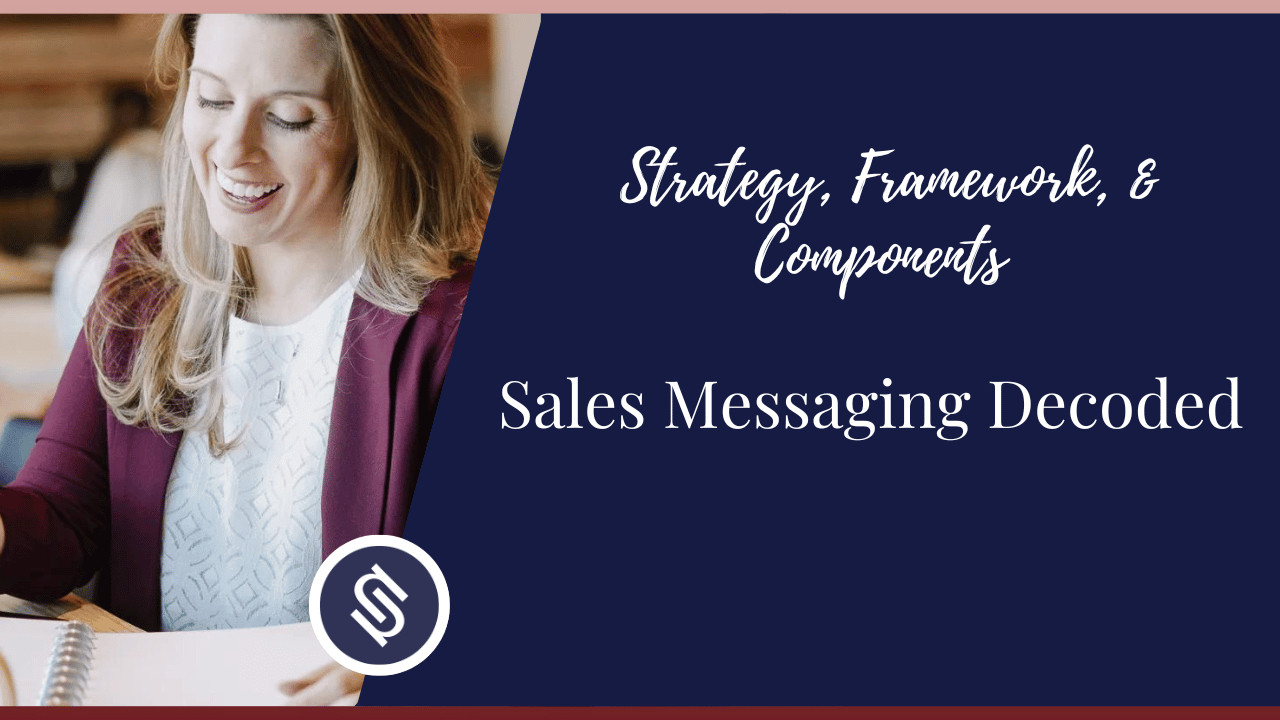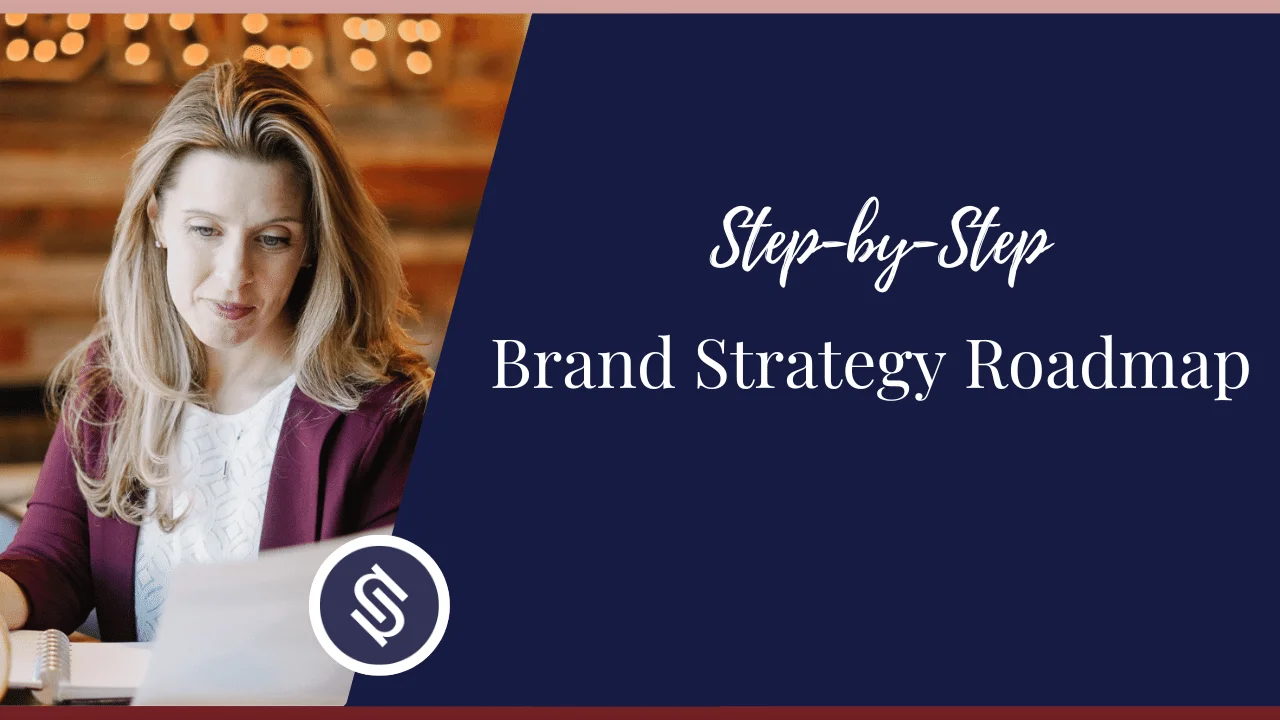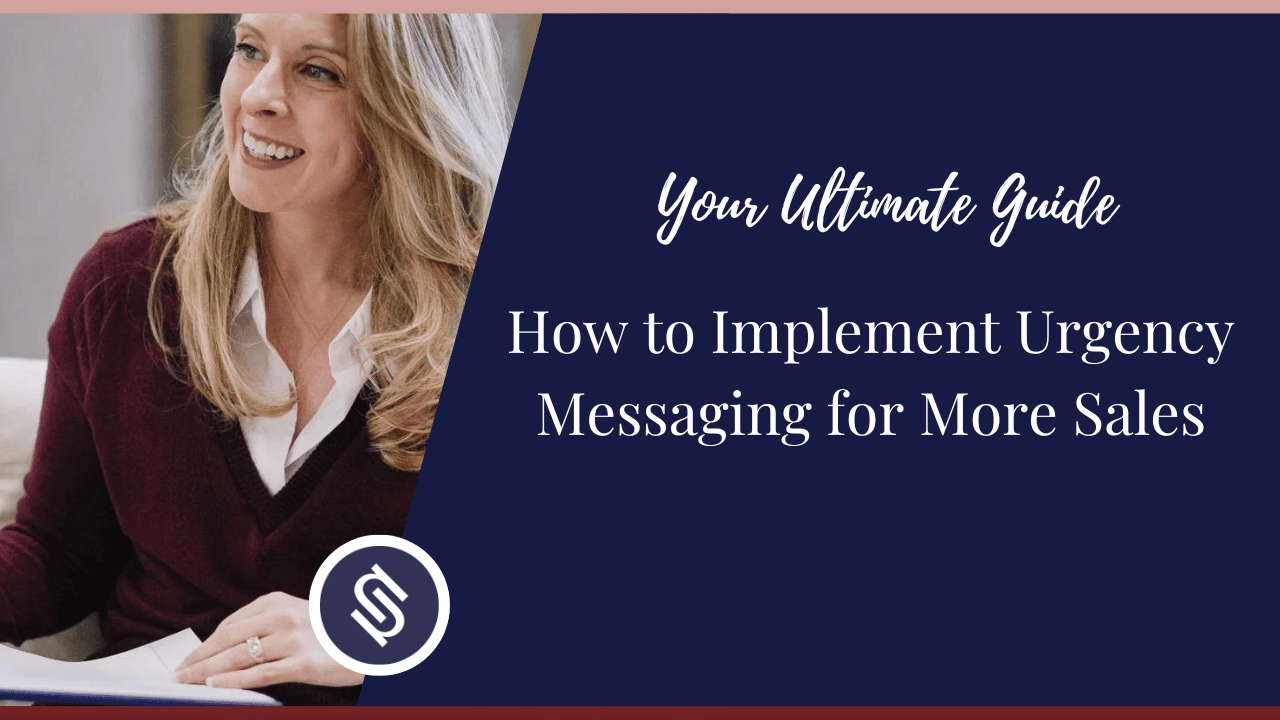Strategic messaging is the backbone of every successful brand.
The answers to “What is a messaging strategy?” and “How do you develop one?” will enable you to:
- Tailor your communications to make every audience interaction impactful.
- Engage your audience like never before.
In this blog post, I’ll explain everything you need to know about strategic messaging communications and offer valuable insights from my extensive experience as a business coach and strategist.
Feel free to use this information as a starting point for a DIY messaging strategy. If you’d like actionable, custom guidance for your specific business, you can get one-on-one business coaching with me, Nora Sudduth.

What is Strategic Messaging?
Strategic messaging is the art of communicating relevantly to your employees and audience. It involves:
- Understanding what your target audience needs and wants
- Speaking to those points in a way that also highlights your company’s fundamental goals and values.
What Are the 3 Essential Elements Of Message Strategy?
To develop a successful message strategy, you must craft clear, consistent messages with emotional appeal.
Let’s take a closer look at each of these elements to understand how they make your communication on-point:
- Clarity: The message needs to be clear and easy to understand. It should cut through the noise and deliver one big idea that sticks with the audience.
- Consistency: Your strategic messages must be consistent across all platforms and communications. This constant reinforcement builds a solid and recognizable brand identity.
- Emotional connection: The message should resonate emotionally, tapping into the audience’s values and desires. This resonance forms a deeper bond and subtly gains customer loyalty.
This approach, with a strong focus on emotions, has ripple effects on your business’s bottom line. On average, emotional marketing brings companies 31% higher revenues. Plus, when emotionally engaged, customers are 3X likely to recommend your product to others.
Why is Strategic Messaging Important?
When you’re strategic with your messages, all the communication your company sends out, from website blurbs to social media posts and internal comms, works together and sends a strong signal. Your audience finds your messaging familiar, resonates with it, and engages with it.
So, the right messaging shows the world what your company stands for. It reflects your company values and goals in a way that people don’t just hear, but they get it, feel it, and become excited to cheer for your success.
Strategic Messaging Examples
When looking at different strategic messaging examples from brands, it’s important to note the two most important aspects:
- How they reflect the brand’s values and goals
- How they resonate with what matters most to their audience.
Below, we’ll briefly do that with three major brands and their different types of messages:
1. Airbnb
The slogan “Belong Anywhere” captures Airbnb’s mission: to make everyone feel part of a community, wherever they are. This message resonates with modern travelers who crave authentic experiences and a sense of belonging. It taps into the emotional side of travel, which is key for Airbnb’s diverse audience.
2. Spotify
Spotify’s “Music for Every Mood” campaign highlights its vast library. It matches music to any mood or activity and sells the idea of a personalized listening experience. The messaging strategy connects on an emotional level. It meets the universal need for music that enhances daily life and memorable moments.
3. Patagonia
In 2017, this famous outdoor clothing and gear retailer changed its homepage to a black screen that said, “The President Stole Your Land.”
This bold stance directly challenged President Trump’s actions and reinforced the company’s image as an advocate for nature. By doing so, they deeply resonated with like-minded consumers who value environmental action.
What is a Strategic Messaging Map?
A strategic messaging map is a visual tool that outlines how an organization communicates its key messages to different target audiences. It guides all messages to align with the strategic goals and appeal to the identified target audiences.
This map can take many forms, such as a table, grid, flowchart, diagram, mind map, or graphic workflow.
Typically, it includes:
- Main messages with supporting points
- Specific benefits or proof points that back up those messages
Marketers use this tool to maintain consistency across various communication platforms.
They also refer to it to ensure that every piece of content reinforces the company’s overarching strategic goals.

Why is Strategic Communication Important?
Strategic communication helps you deliver precise and compelling messages to your audience. It ensures you send the right messages in every situation, following the rules in your strategic messaging map we described above.
Here’s what this clarity and consistency in communication can do for your company:
- Builds Brand Identity: It helps create a strong brand image, making your business recognizable and trusted by customers. Brand identity is key for long-term success.
- Improves Customer Relationships: Regular and clear communication with customers keeps them informed and engaged and makes them feel valued and understood. Good customer relationships can lead to higher engagement and loyalty.
- Strengthens Market Positioning: Targeted messaging clearly articulates what makes your business unique or why your products or services are superior. It attracts the right customers and solidifies your company’s market positioning.
- Drives Employee Engagement: Strategic communication isn’t just external. Internal comms keep your employees informed and involved in your company’s goals and achievements. They can boost morale, motivating them to be more productive and innovative.

Benefits of Hiring a Brand Messaging Strategist
Brand messaging without expert help is like going to a party and trying to explain what makes your business awesome while everyone’s talking at once.
As a brand messaging strategist, I’ve helped countless businesses craft messages that connect with people on an emotional level, earn their trust, and keep them coming back for more.
Here’s what I bring to the table and how I see the benefits of hiring a brand messaging strategist:
1. Expert Insight
A skilled brand messaging strategist is a walking encyclopedia of market trends. They have specialized knowledge and experience and know what makes people tick. That’s why they can create relevant messages that hit home for your audience.
2. Time Efficiency
Developing a powerful messaging strategy is complex and time-consuming. A strategist can streamline this process for you and do what they’re best at while you focus on other business parts where you can bring even more value.
3. Resource Optimization
An expert strategist helps you spend every marketing dollar wisely. They design strategies that maximize the budget’s impact, reduce waste, and increase the return on marketing investments.
4. Objective Perspective
Sometimes, being too close to something leads to biased decisions. As a strategist, I come in with a fresh perspective, spotting hidden gems and challenging assumptions you might miss. This outside view can be crucial for refining your brand message.
5. Scalability
A brand messaging strategist addresses your current communication needs but also does future-proof planning. Your chosen strategist must create a messaging framework that can scale with you, ensuring your communications stay relevant and effective no matter how big you become.
As a brand messaging strategist with a proven record of success, I’ve developed strategies that led to over $500M in products and services. Book a 20-minute call to discover how I can help you better communicate about your offerings.

Types Of Message Strategies
When it comes to different types of messages in communication, strategies can be classified by focus (cognitive, affective, conative) and appeal (emotional, rational, brand image/positioning).
This classification includes some overlaps because, in practice, the different types of message strategies are not always mutually exclusive. Instead, they’re layers or dimensions of a specific approach.
Let’s take a closer look at each one:
1. Cognitive Message Strategies
Cognitive focus uses facts, logic, and data to convince the audience of the product or service’s benefits.
Examples include highlighting unique selling propositions (USPs) or making comparisons with competitors.
2. Affective Message Strategies
Affective focus leverages the audience’s emotions and aims to create a positive association with the brand. It often uses humor, nostalgia, or heartwarming stories.
3. Conative Message Strategies
Conative focus aims to drive a specific action from the audience, such as purchasing, signing up for a newsletter, or visiting a store. It typically employs urgency tactics, calls to action (CTAs), or scarcity messaging.
4. Emotional Message Strategies
In an overlap with the affective-focused strategies, emotional messages connect with the audience on an emotional level. Storytelling is a common technique used in such instances.
5. Rational Message Strategies
Similar to cognitive-focused strategies, rational messages use logic, reason, and evidence to persuade the audience.
They are designed to appeal to the audience’s intellect, encouraging them to make decisions based on thoughtful consideration and practical benefits.
6. Brand Image/Positioning Message Strategies
This strategy emphasizes a brand’s unique identity and position, helping you sell in a crowded market by standing out from competitors. Messaging that builds brand positioning aligns with the audience’s values and meets their expectations, making the brand a preferred choice over others.
Marketers combine the above different types of messages to create more compelling campaigns. The best strategy will depend on your specific goals, target audience, and the product or service you’re promoting.
Tactical vs. Strategic Messaging
Tactical messaging involves short-term, specific communications. It aims to achieve immediate objectives, such as promoting a sale or event.
Strategic messaging, on the other hand, outlines the long-term goals and the overarching brand narrative. Its goal is to establish and maintain a consistent brand identity.

How to Make a Brand Message Strategy
Building a solid brand message strategy is the first step to your company truly connecting with customers.
I like to start by getting clear on two essential things:
- What Makes You Special? We dig deep to understand your company’s unique strengths and values. What sets you apart from the competition?
- Who Are You Talking To? We determine your ideal customer’s needs and desires, focusing on what matters most to them.
Once you have that foundation, we can start crafting a message that resonates with your target audience. Think of it as having a genuine conversation with your perfect customer — one that’s clear, engaging, and leaves a lasting impression.
How to Develop a Messaging Framework
The strategic messaging framework outlines the overall communication guidelines for your brand or organization, including the messaging map that focuses on audience-specific communication.
In my work with clients, I guide them through a structured process to create a detailed framework that includes the following:
- Tailored Talks: First, we break down your target audience into smaller groups. It’s like when you have different groups of friends and talk to them differently. We figure out what matters most to each group and craft messages that speak directly to them.
- The Big Idea: Then, we brainstorm the heart and soul of your brand message — the one main thing you want people to remember.
- Supportive Squad: Next, we create backup messages that highlight your product or service’s special features, benefits, and unique attributes.
- Clear Communication: We organize all these messages in a clear order, making sure everything connects and reinforces the main idea.
How to Implement Your Brand Message Strategy
Implementing the brand message strategy involves rolling out the messages across various marketing channels and:
- Training teams to use the framework consistently in all customer interactions
- Ensuring all marketing materials reflect the defined brand messages
This implementation phase is crucial for maintaining the integrity of your strategy as it goes live.
How to Measure the Impact of Your Efforts
I recommend using specific metrics, such as engagement rates, brand awareness, customer feedback, and conversion metrics, to gauge the effectiveness of your messaging strategy.
These indicators help assess whether your brand message resonates with the audience and drives the desired actions. Regularly reviewing these metrics allows you to make timely adjustments and optimize your messaging strategy for maximum impact.

Frequently Asked Questions (FAQs)
For a quick, holistic view of strategic messaging, read the answers to the following FAQs:
What Role Does Audience Analysis Play in Strategic Messaging?
Audience analysis lets you craft messages that resonate with your audience’s needs and interests, making them much more likely to listen and take action. It also helps identify the most effective channels and communication styles for reaching your audience.
How Often Should Strategic Messaging be Reviewed or Updated?
The answer depends on your industry, market dynamics, and how fast your audience preferences or competitive environment change. Some businesses do it quarterly, while others only do it annually. Talk to a messaging strategist to get an exact answer for your specific business and industry.
Can Strategic Messaging Influence Internal Organizational Culture?
Absolutely! A strategic internal messaging plan can set the tone for the organizational culture you envision. Use clear and positive language to remind everyone of the values that matter most. Shape your messages to help them feel on the same page and excited to be part of your team.
Conclusion
Throughout this post, you’ve discovered the essentials of strategic messaging and the importance of having a clear, consistent, and emotionally resonant message.
We’ve explored various strategies, from cognitive to affective, and gave you insights into implementing and measuring the impact of your messaging efforts.
Are you eager to apply these concepts practically? Let’s start a strategic messaging FiniSprint so you can develop an actual communications framework and use it right away.







